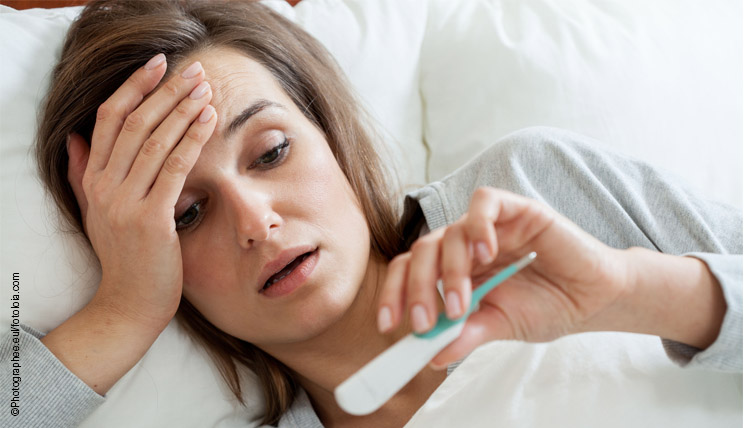Many people enjoy travelling the world during their well-deserved holidays. But nobody wants to catch an infection during this time. Particularly, the risk of a dengue infection is often underestimated, although the tropical fever nowadays belongs to the most frequent virus infections in the world.
Dengue fever is caused by the dengue virus (DENV) which is transmitted to humans by the mosquito species Aedes aegypti and its Asian relative Aedes albopictus. First reports on dengue outbreaks date back to 1779 in Jakarta, Indonesia and Cairo, Egypt. Notably, the virus has globally spread with a worrying speed during the past years. A recent study about the spatial limits of DENV transmission reaches the estimate that 3.9 billion people in 128 countries are currently at risk of DENV infection.To date mainly South East Asia, Central Africa, Latin American countries and the Caribbean are threatened by dengue. However, few cases of local dengue infection were even reported in Europe: First cases were registered in France and Croatia in 2010, an outbreak of dengue fever with more than 2000 cases occurred on the island Madeira in 2012. One reason for the global virus expansion is the spread of the transmitting mosquitos. Climate warming and global trade and tourism open up new habitats to the insects.
Dengue virus times 4
Dengue virus belongs to the flaviviruses and exists in 4 different variants, so called serotypes: DENV-1, DENV-2, DENV-3 and DENV-4. A person who has overcome a dengue infection gains lifelong immunity – but unfortunately only against the one serotype that has caused the infection. A second infection with one of the other 3 DENV serotypes is a particular hazard, because often this second infection takes a more severe course and is life-threatening.
The mosquito
The malicious thing with the mosquitos: They are active during the day and feel particularly comfortable in manmade habitats and urban regions.
The mosquito is only 3 to 4 millimeters. It is black with white stripped legs and a white marking on its back which resembles a lyra. Only females bite for blood, which serves as an energy source during egg maturation. The eggs are laid in stagnant water. The smallest puddle is already sufficient, for instance, in empty buckets or old tires. The mosquito preferentially bites shortly after sunrise and before sunset. Compared to other mosquito species Aedes is rather silent and attacks from below and behind. Often it bites into naked feet and ankles from underneath the table. It takes approximately one week until the bitten persons feels the first symptoms of dengue fever.
Symptomes: Fever, headache and body pain
Initially, dengue feels like a bad flu: high fever of up to 40°C, headache, aching joints and muscles, nausea, swollen glands. Usually, symptoms improve within a few days. During severe dengue, however, hemorrhagic fever with severe bleeding or circulatory collapse, which is called dengue shock syndrome, may occur. At this stage, a period of 24 – 48 hours is critical for life. The patient should be monitored at a hospital.
To diagnose and treat dengue
It is difficult to diagnose dengue because its symptoms can hardly be differentiated from those of other infectious diseases such as flu, rubella, measles, typhus, or malaria. An infection with chikungunya virus also causes similar symptoms and can be transmitted by the same mosquito species.
This is why diagnosis of dengue is usually based on detection of dengue virus itself or detection of specific antibodies which are produced by the immune system to fight the dengue virus. A novel serological test system has been designed for detection of the viral protein NS1. It is present in sera of infected persons prior to specific antibodies, which is why dengue can be diagnosed early using this test.
There is no specific therapy for dengue. It is important to treat the acute symptoms, but blood thinning drugs such as aspirin need to be avoided, especially in the cases of hemorrhagic fever.
Prevention
There is no effective vaccine against dengue. The only prevention is to avoid mosquito bites as far as possible.


Hello, Dr. Konstanze Stiba,
I found your blog very interesting and now I’m going to write what I think about it.
Firstly there were many things about dengue fever I didn't know that are very interesting. The first thing was that I didn’t know that dengue fever virus infections are of the most frequent virus infections in the world. The number of people who are in risk of contract the dengue fever infection is insane. 3.9 billion in 128 countries!! Thats too much.
What you wrote about the 4 different dengue fever virus serotypes is very usefull and something we should have to know. “Dengue virus belongs to the flaviviruses and exists in 4 different variants, so called serotypes: DENV-1, DENV-2, DENV-3 and DENV-4. A person who has overcome a dengue infection gains lifelong immunity – but unfortunately only against the one serotype that has caused the infection.”
You wrote something we really should know if we are in places where there is a risk of dengue fever and specially in Jakarta, where the virus has duplicated the outbreak from one year in only two months. That is that the mosquitoes that transmit the virus “are active during the day and feel particularly comfortable in manmade habitats and urban regions.” We should know it because so we can forewarn when we went this places and we will be more cautious. It is also important to know how they look, something you also have written.
I did know about the sinthoms of this fever. But in general your blog was amazing!! The informations were very interesting and it was never bored.